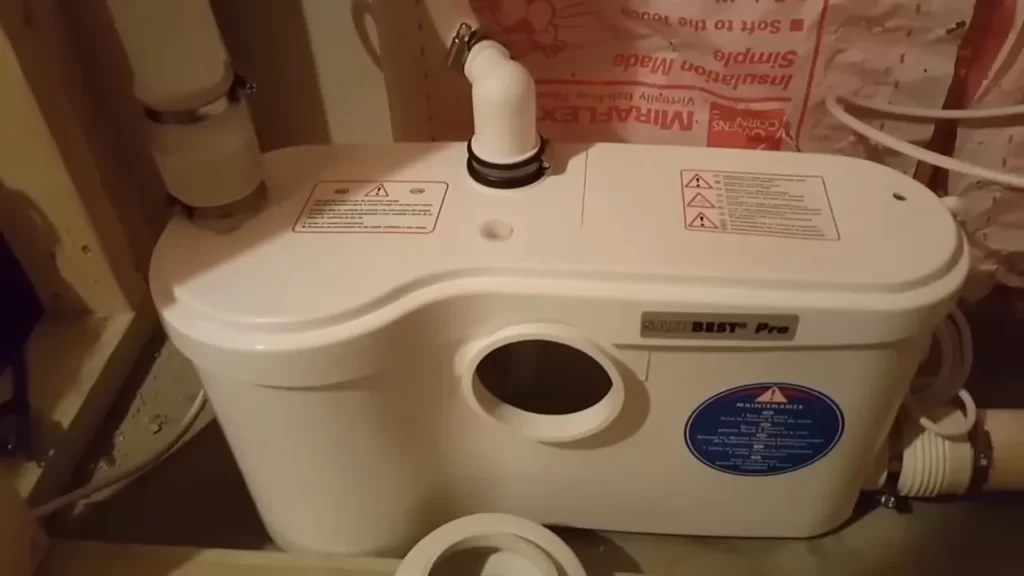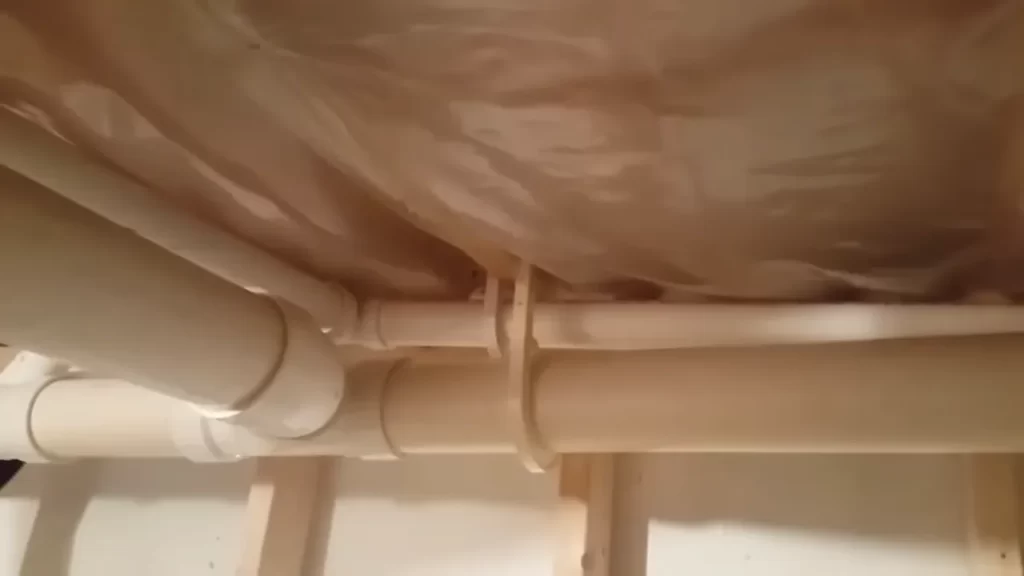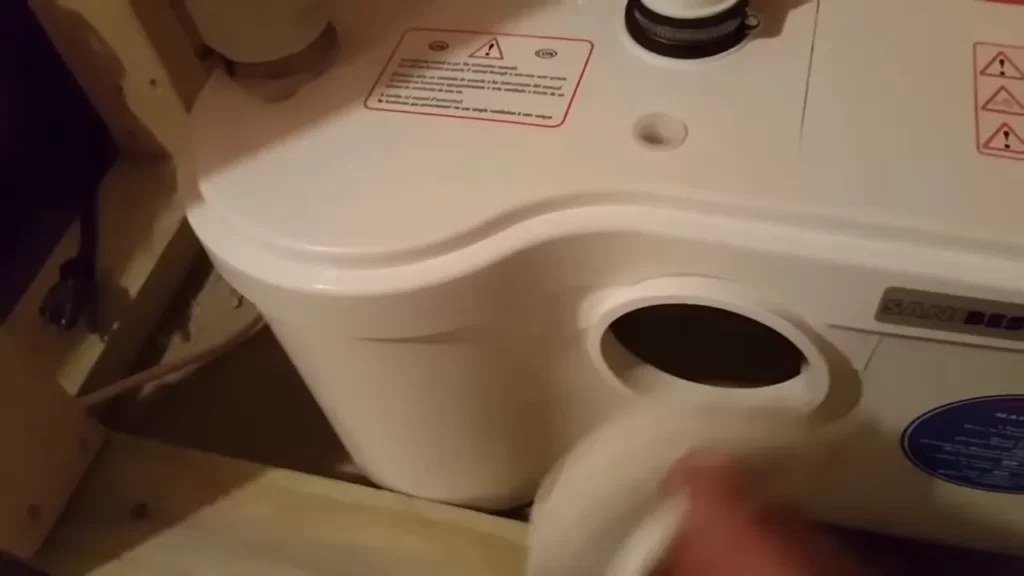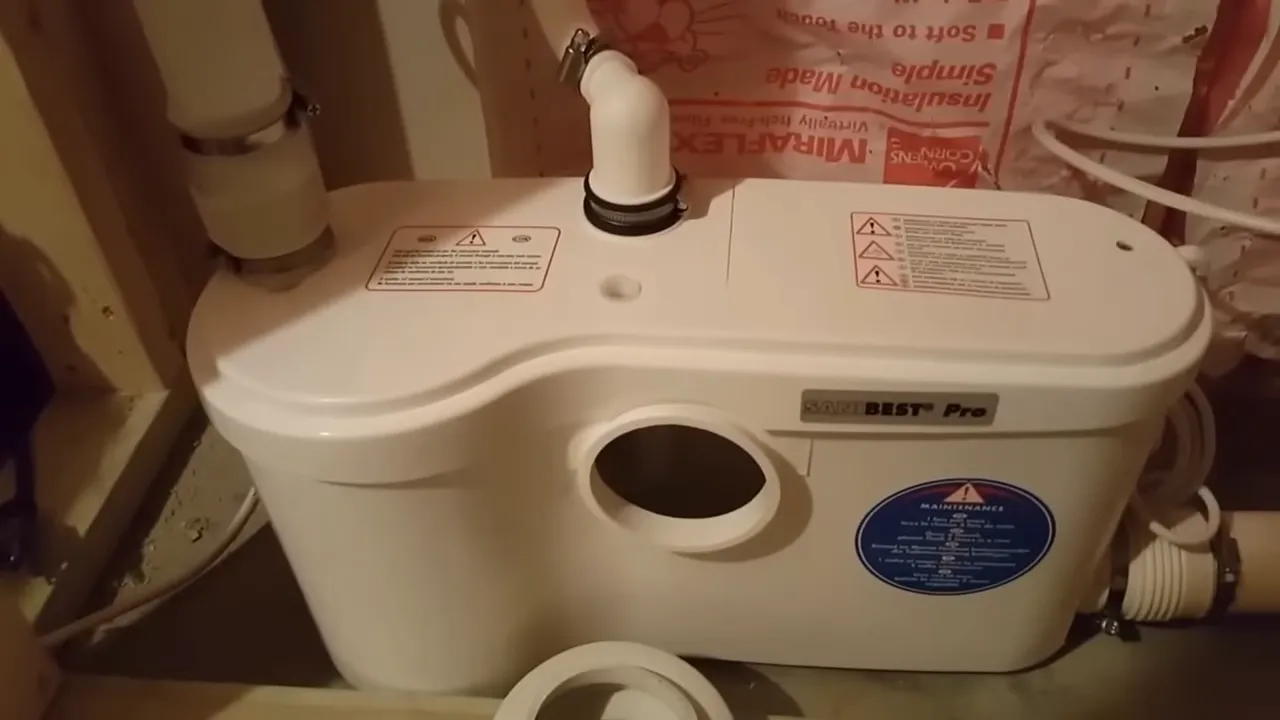To install an upflush toilet, start by locating a suitable area for installation and ensuring you have the necessary tools and materials. Then, assemble the toilet unit according to the manufacturer’s instructions, connecting the tank to the bowl and attaching the seat.
Next, install the macerator pump and connect it to the toilet unit, ensuring proper alignment and secure connections. Finally, connect the inlet and discharge pipes to the macerator pump, providing a suitable venting system where required. Test the toilet for proper functioning, and make any necessary adjustments before completing the installation process.
Understanding The Upflush Toilet System
Installing a new toilet may seem like a straightforward task, but what happens when you find yourself in a situation where traditional plumbing isn’t feasible? That’s where an upflush toilet system comes into play. In this article, we’ll dive into the details of understanding the upflush toilet system and the advantages it offers. So, let’s get started!
What is an upflush toilet?
An upflush toilet, also known as a macerating or grinder toilet, is a type of toilet system that operates differently from traditional plumbing systems. With an upflush toilet, waste and water are pumped upwards and away from the toilet rather than relying on gravity to carry them down the pipes.
But how exactly does an upflush toilet system work?
How does an upflush toilet system work?
The main component of an upflush toilet system is a macerator, which, as the name suggests, macerates waste and toilet paper into a fine slurry. This macerator is installed behind the toilet bowl and is responsible for breaking down the waste before pumping it through small diameter pipes.
When you flush the upflush toilet, the macerator motor activates, grinding the waste into a slurry and mixing it with water to create a more manageable consistency. This slurry is then pushed into the small diameter pipes connected to the macerator, which can be directed towards a septic tank or sewer line.
One of the advantages of using an upflush toilet system is its flexibility in terms of installation. Since the waste is pumped upwards and away from the toilet, it allows for greater freedom in location choice. Whether you’re looking to install a toilet in a basement, an additional bathroom, or any area without access to traditional plumbing, an upflush toilet system provides a solution.
Advantages of using an upflush toilet system
Using an upflush toilet system comes with several advantages, including:
- Easy installation: Upflush toilets can be installed almost anywhere, eliminating the need for complex and expensive conventional plumbing.
- Cost-effective: Since upflush toilets don’t require digging or breaking through walls, the installation costs are significantly lower compared to traditional plumbing.
- Space-saving: Upflush toilet systems are compact and can be installed in tight spaces, making them perfect for small bathrooms or areas with limited room.
- Increased flexibility: With the ability to pump waste upwards and over long distances, upflush toilets offer flexibility in choosing the location of your bathroom.
- Less disruption: Installing an upflush toilet system causes minimal disruption, as there’s no need for extensive construction work or rearranging existing plumbing lines.
Now that you have a better understanding of the upflush toilet system, you can confidently consider this innovative solution for your unique plumbing needs. From easy installation to increased flexibility, upflush toilets offer a convenient alternative to traditional plumbing systems. So, why wait? Upgrade your bathroom with an upflush toilet system today!

Preparing For Installation
Before you begin installing your upflush toilet, it’s important to make sure you are properly prepared. This involves gathering the necessary tools and materials, assessing the space and choosing the right location, and checking local building codes and regulations. By taking these steps, you can ensure a smooth and successful installation process. Let’s dive into each of these areas in more detail.
Gathering the necessary tools and materials
To install an upflush toilet, you will need a few key tools and materials. Here is a list of the essentials you should have on hand:
| Tools | Materials |
|---|---|
| Adjustable wrench | Upflush toilet kit |
| Tape measure | PVC pipe and fittings |
| Hacksaw | Sealant |
| Screwdriver | Level |
| Socket wrench set | Pipe cutter |
Make sure you have all these tools and materials ready before you start the installation. This will save you time and prevent any unnecessary trips to the hardware store.
Assessing the space and choosing the right location
Before installing an upflush toilet, it’s crucial to assess the space where it will be placed and choose the right location. Here’s what you should consider:
- Measure the available space to ensure the upflush toilet and its components will fit properly.
- Consider the proximity to existing plumbing lines to minimize the need for additional pipe connections.
- Choose a location that is convenient and easily accessible for users.
- Ensure there is proper ventilation in the area to prevent odors from building up.
- Take into account any future remodeling plans that may affect the placement of the upflush toilet.
By carefully assessing the space and choosing the right location, you can optimize the functionality and convenience of your upflush toilet installation.
Checking local building codes and regulations
It’s important to check your local building codes and regulations before installing an upflush toilet. This ensures compliance and prevents any potential issues in the future. Here’s what you need to do:
- Research the specific requirements and restrictions for upflush toilet installations in your area.
- Contact your local building department for any necessary permits or approvals.
- Follow any guidelines regarding the distance between the upflush toilet and other fixtures, as well as the required venting.
Adhering to local building codes and regulations will not only ensure a safe and legal installation, but it will also give you peace of mind knowing that your upflush toilet meets all necessary standards.

Step-By-Step Installation Process
Installing a upflush toilet may seem like a daunting task, but with the right tools and a little bit of patience, it can be done successfully. Follow this step-by-step guide to ensure a smooth installation process.
Installing the upflush unit
- Choose a suitable location for the upflush unit, preferably near the existing plumbing.
- Ensure that the floor is level and sturdy enough to support the weight of the unit.
- Place the upflush unit at the desired location and adjust its position according to the manufacturer’s instructions.
Mounting the upflush unit securely
- Using the provided brackets and screws, secure the upflush unit to the floor or wall, ensuring it is level and stable.
- Ensure that all connections are tight and secure to prevent any leaks or malfunctions.
Connecting the water supply
- Connect the water supply line to the designated inlet on the upflush unit.
- Tighten the connection using an adjustable wrench to ensure a watertight seal.
- Turn on the water supply and check for any leaks.
Installing the discharge pipe
- Attach the discharge pipe to the upflush unit, ensuring a secure fit.
- Position the other end of the discharge pipe to the designated drain outlet, using the appropriate fittings if necessary.
- Secure all connections using clamps or adhesive as recommended by the manufacturer.
Setting up the toilet bowl
- Place the wax ring or gasket on the flange of the upflush unit.
- Position the toilet bowl onto the wax ring or gasket, aligning it with the mounting holes on the unit.
- Apply downward pressure to ensure a proper seal between the toilet bowl and the upflush unit.
Properly positioning the toilet bowl
- Ensure that the toilet bowl is level and aligned correctly with the surrounding floor or wall.
- Adjust the position as needed to achieve the desired orientation.
Securing the toilet bowl to the upflush unit
- Insert and tighten the provided bolts or screws through the mounting holes on the toilet bowl and into the corresponding holes on the upflush unit.
- Check that the toilet bowl is securely attached and does not wobble or move.
Connecting the electrical components
- Refer to the manufacturer’s instructions for proper electrical wiring.
- Carefully connect the electrical components to their respective terminals on the upflush unit, following proper electrical safety precautions.
Wiring the upflush unit to the electrical supply
- Connect the upflush unit’s power cord to a dedicated electrical outlet or electrical supply.
- Ensure that the electrical supply is compatible with the power requirements of the upflush unit.
Testing the electrical connections
- Turn on the electrical supply and check that the upflush unit powers up and operates correctly.
- Test each function of the upflush unit, such as flushing and pumping, to ensure proper functionality.
Testing and Troubleshooting
- Fill the toilet bowl with water and flush to check for any leaks or blockages in the system.
- Monitor the operation of the upflush unit during normal usage and address any issues promptly.
Checking for leaks and proper functioning
- Inspect all connections, including the water supply and discharge pipe, for any signs of leakage.
- Ensure that the toilet bowl fills and flushes properly without any clogs or backups.
Troubleshooting common issues
If you encounter any problems during or after the installation process, consult the manufacturer’s troubleshooting guide or contact their customer support for assistance. Common issues may include:
- Weak flushing performance
- Unusual noises or vibrations
- Inconsistent water supply
- Intermittent operation
By following these step-by-step instructions and troubleshooting tips, you can successfully install a upflush toilet and enjoy its convenience and functionality in your home.

Maintenance And Care Tips
Maintenance and Care Tips are essential for keeping your upflush toilet functioning properly and prolonging its lifespan. By following these simple steps, you can ensure that your toilet remains clean, well-lubricated, and in optimal working condition.
Regular cleaning and sanitation
Regular cleaning and sanitation are crucial for maintaining hygiene and preventing unpleasant odors. To keep your upflush toilet clean, follow these steps:
- Use a mild, non-abrasive cleaner to clean the exterior of the toilet. Avoid using harsh chemicals that may damage the finish.
- Clean the toilet bowl regularly using a toilet brush and a toilet bowl cleaner. Scrub the bowl thoroughly, including under the rim, to remove any stains or residue.
- Wipe down the seat and lid with a disinfectant wipe or a mild cleaner.
- Don’t forget to clean the flush mechanism and the drain pipe. Use a brush or a pipe cleaner to remove any buildup or debris.
- Finish by flushing the toilet several times to rinse away any remaining cleaning solution.
Lubricating moving parts
Lubricating the moving parts of your upflush toilet is essential for smooth operation. Here’s how you can do it:
- Check the instruction manual or consult the manufacturer’s website to identify the specific moving parts that require lubrication.
- Using a silicone-based lubricant, apply a small amount to the designated areas. Be sure to follow the manufacturer’s recommendations concerning the type and amount of lubricant to use.
- Once applied, operate the toilet a few times to distribute the lubricant evenly and ensure proper functioning.
Inspecting and replacing components as needed
Inspecting and replacing components as needed is crucial for preventing major issues and potential leaks. Follow these steps to keep your upflush toilet in excellent condition:
- Regularly inspect the water supply lines, connectors, and valves for signs of wear or damage. Look for any leaks, cracks, or corrosion.
- If you notice any issues, such as a leaking valve or a damaged waterline, it’s essential to replace the faulty component as soon as possible.
- Monitor the performance of the float switch and the pump. If you notice any abnormalities, such as excessive noise or reduced pumping power, it may be necessary to replace these components.
- Ensure that all electrical connections are secure and in good condition. Any loose or damaged wires should be repaired or replaced promptly.
By following these maintenance and care tips, you can ensure that your upflush toilet remains clean, well-maintained, and in optimal working condition. Regular cleaning, lubrication, and inspections will help prevent issues and extend the life of your upflush toilet.
Frequently Asked Questions
Do You Need To Vent An Upflush Toilet?
No, upflush toilets do not require venting as they use a macerator to pump waste upward. This eliminates the need for traditional plumbing vents, making them easier to install in locations without access to a vent pipe. Venting is only necessary for conventional toilets.
Are Upflush Toilets Worth It?
Yes, upflush toilets are worth it. They provide a convenient solution for spaces without traditional plumbing, saving time and money on installation. With their ability to pump waste vertically and horizontally, these toilets offer flexibility in bathroom placement. Overall, upflush toilets are a practical choice for adding a bathroom anywhere in your home or building.
Can You Hook A Shower To An Upflush Toilet?
Yes, you can connect a shower to an upflush toilet system. This allows you to have a shower in your bathroom even if there is no existing plumbing for it. Connecting a shower to an upflush toilet requires the installation of additional plumbing connections and a drain pump.
Can You Put An Upflush Toilet Anywhere?
Yes, you can install an upflush toilet in any location. It is a versatile and convenient option for areas where traditional plumbing is difficult or expensive to install. With an upflush system, waste is pumped upwards to reach the main sewer line.
Conclusion
To sum it up, installing an upflush toilet doesn’t have to be a daunting task. By following these step-by-step instructions, you can easily add a functional toilet to any space without the need for major renovations. From choosing the right system to assembling and connecting the components, this guide has covered all the essential aspects.
Take your time, follow the instructions diligently, and enjoy the convenience and flexibility that an upflush toilet brings. Happy installing!
